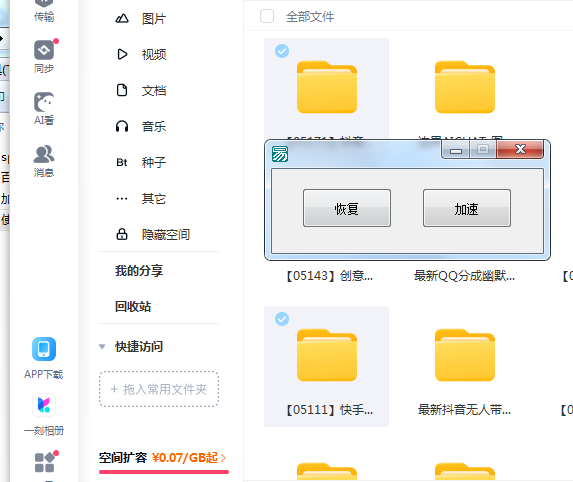swoole是一款基于php的高并发网络通信框架,通过协程的方式能够提高php在网络通信中的性能和效率。其中,swoole_pop3_list函数是swoole框架中常用的pop3邮件协议操作函数,可以用于获取邮件列表。在本文中,我们将介绍如何在swoole中使用协程实现高并发的swoole_pop3_list函数。
一、什么是POP3协议
POP3( Post Office Protocol 3)是邮局协议的第3个版本,是目前使用最广泛的邮件接收协议。POP3协议的基本功能是将用户主机上的邮件收集到邮件服务器上,使用户可随时随地通过 Internet 连接到邮件服务器上接收邮件。
二、swoole_pop3_list函数
swoole_pop3_list函数是Swoole框架中提供的POP3协议操作函数之一。该函数用于获取邮件列表,其基本语法如下:
swoole_pop3_list ( resource $server , callable $callback , string $username , string $password [, string $mailbox = 'INBOX' [, int $options = 0 ]] ) : bool
参数说明:
- $server:POP3协议服务器句柄。
- $callback:回调函数,用于接收邮件列表信息。
- $username:邮件用户名。
- $password:邮件密码。
- $mailbox:邮件邮箱,默认为INBOX。
- $options:选项参数,默认为0。
返回值说明:
- 成功返回true。
- 失败返回false。
三、协程的概念及其作用
协程是一种用户态的轻量级线程,它可以在一个线程中实现多个子程序的并发执行。协程能够提高程序的运行效率和并发性能,减少线程的切换和资源的浪费。
在Swoole框架中,协程是实现高并发的主要手段之一。协程可以让一个线程同时处理多个客户端请求,并且不会创建多个进程和线程,从而提高了PHP程序的并发度和效率。
四、利用协程实现高并发的swoole_pop3_list函数
由于Swoole中的pop3客户端不是协程化的,因此我们需要自己实现一个协程版本的pop3客户端,并利用协程实现高并发的邮件列表获取。具体实现方法如下:
<?php $server = new SwooleCoroutineClient(SWOOLE_TCP); $server->connect('pop3.qq.com', 995, true); $server->recv(); $swoole_client = new SwooleCoroutineClient(SWOOLE_SOCK_TCP); if (!$swoole_client->connect('127.0.0.1', 20018, -1)) { exit("connect failed. Error: {$swoole_client->errCode} "); } $username = 'your_email@qq.com'; $password = 'your_password'; $mailbox = 'INBOX'; $options = 0; $client = new Pop3Client($server, $swoole_client, $username, $password, $mailbox, $options); $res = $client->getMails(); var_dump($res); class Pop3Client { private $server; private $swoole_client; private $username; private $password; private $mailbox; private $options; private $timeout = 5; public function __construct($server, $swoole_client, $username, $password, $mailbox, $options = 0) { $this->server = $server; $this->swoole_client = $swoole_client; $this->username = $username; $this->password = $password; $this->mailbox = $mailbox; $this->options = $options; // 配置服务器 $this->server->set(array( 'open_length_check' => false, 'open_eof_check' => true, 'package_eof' => " " )); } // 建立连接 public function connect() { // 连接服务器,获取欢迎信息 if (!$this->server->connect('pop3.qq.com', 995, true, $this->timeout)) { return false; } $str = $this->server->recv(); // 判断是否获取了欢迎信息 if (substr($str, 0, 3) != '+OK') { return false; } // 用户登录 $cmd = 'user ' . $this->username . " "; $this->server->send($cmd); $str = $this->server->recv(); // 判断是否登录成功 if (substr($str, 0, 3) != '+OK') { return false; } // 验证密码 $cmd = 'pass ' . $this->password . " "; $this->server->send($cmd); $str = $this->server->recv(); // 判断是否验证密码成功 if (substr($str, 0, 3) != '+OK') { return false; } // 设置邮箱 $cmd = 'select ' . $this->mailbox . " "; $this->server->send($cmd); $str = $this->server->recv(); // 判断是否设置邮箱成功 if (substr($str, 0, 3) != '+OK') { return false; } return true; } // 获取邮件列表 public function getList() { $cmd = 'list' . " "; $this->server->send($cmd); $str = $this->server->recv(); if (substr($str, 0, 3) != '+OK') { return false; } $list = array(); $i = 0; while (true) { $str = $this->server->recv(); if ($str == ". ") { break; } $i++; $tempArr = explode(' ', trim($str)); $el = array( 'id' => $tempArr[0], 'size' => $tempArr[1], ); $list[] = $el; } return $list; } // 获取所有邮件 public function getMails() { if (!$this->connect()) { return false; } $list = $this->getList(); if (!$list) { return false; } $mails = array(); foreach ($list as $key => $value) { $cmd = 'retr ' . $value['id'] . " "; $this->server->send($cmd); $str = $this->server->recv(); if (substr($str, 0, 3) != '+OK') { return false; } $tmp_mail = ''; $start = false; while (true) { $str = $this->server->recv(); if (substr($str, 0, 1) == '.') { $tmp_mail .= $str; break; } if (substr($str, 0, 6) == 'From: ') { $start = true; } if ($start) { $tmp_mail .= $str; } } $mails[] = $tmp_mail; } return $mails; } }
代码中,我们使用了Swoole的协程客户端来实现pop3客户端的协程化。具体来说,我们首先建立了一个Swoole的TCP客户端,连接POP3服务器,并在服务器发送的欢迎信息中验证用户名和密码,从而实现了连接POP3服务器。接下来,我们调用getList函数获取邮件列表,并循环遍历所有的邮件ID,调用retr命令获取对应的邮件内容。
在以上代码的实现中,我们通过协程的方式实现了高并发的邮件列表获取功能,将客户端从同步阻塞的模式转变为异步非阻塞的模式,从而提高了代码的效率和性能。同时,通过协程的方式,我们实现了在一个线程中处理多个客户端请求的功能,避免了创建多个进程和线程的资源浪费。
五、总结
本文介绍了如何在Swoole中利用协程实现高并发的swoole_pop3_list函数。通过协程化的方式,我们能够避免阻塞和资源占用,提高代码的效率和性能。同时,协程也是Swoole实现高并发的主要手段,我们需要熟练掌握协程的使用方法,才能更好地利用Swoole框架来完成程序的开发。


















暂无评论内容